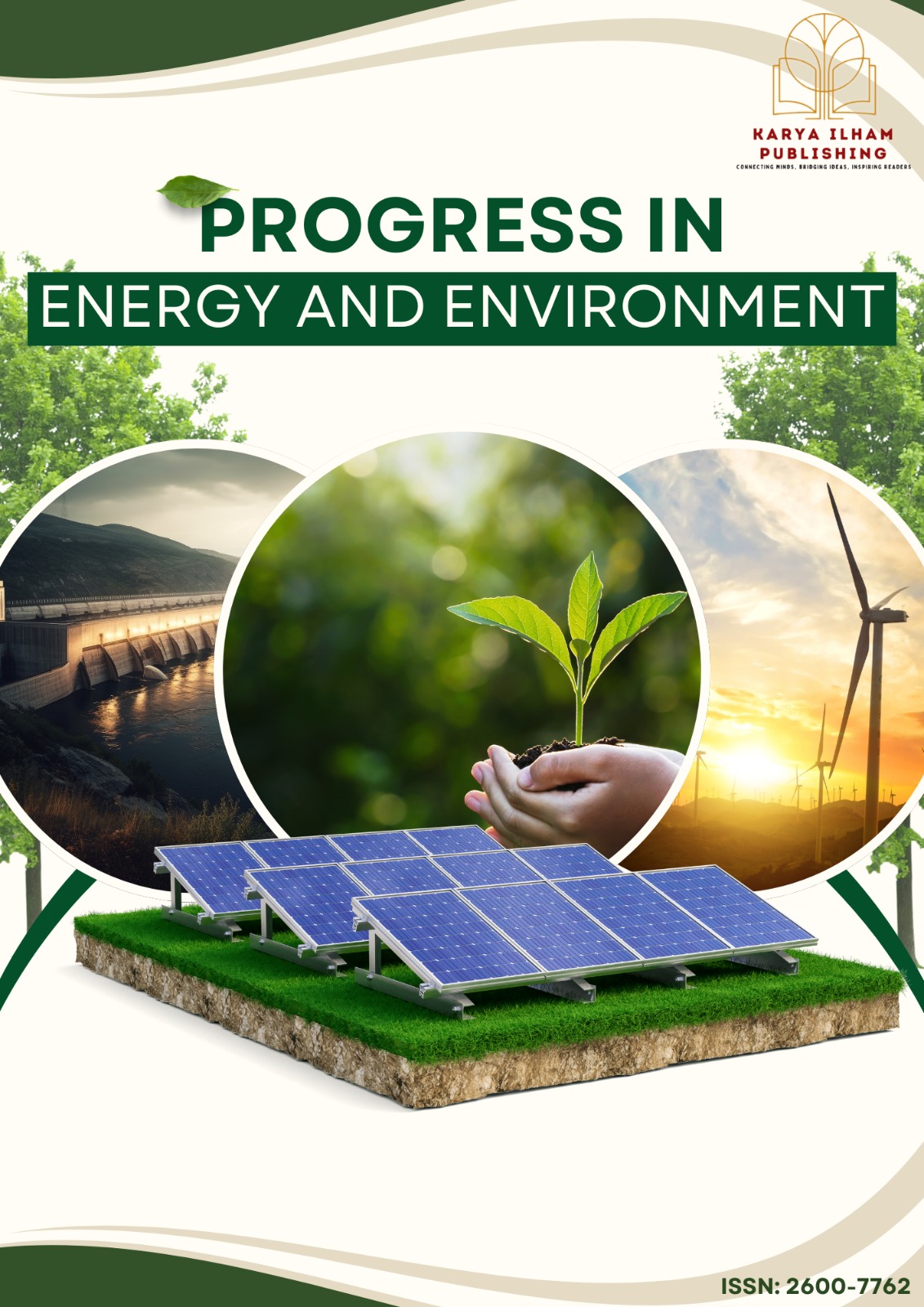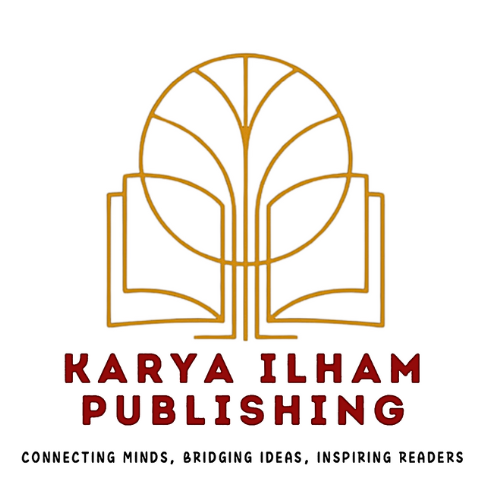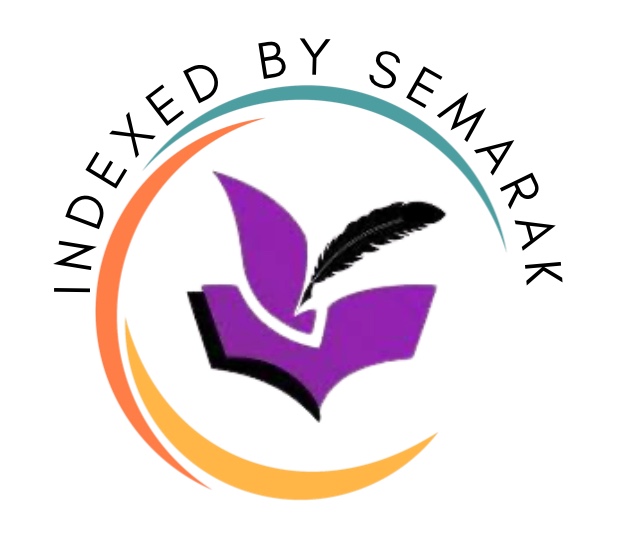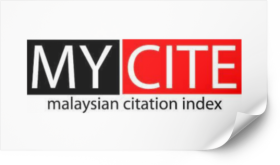Enhancing Sustainable Design Approaches for High-Rise Buildings in Hot and Humid Climate Regions
DOI:
https://doi.org/10.37934/progee.31.3.7994Keywords:
Green Design, High-rise Building, Hot and Humid Weather, Criteria, AlternativesAbstract
Green design is designing and developing an approach that focuses on human health and minimises environmental impacts. In line with the rapid development and growth of the construction industry in Malaysia, green building design has become familiar, especially in high-rise buildings in city areas with many citizens. However, the hot and humid weather is a limitation of green designs for high-rise buildings due to the tropical location of Malaysia. Green design remains in the early phase of the science and approach underlying the green building concepts. Numerous concerns persist, and obstacles must be addressed before the industry can achieve substantial advancement in the implementation of efficient green design programs. Malaysia faces innumerable issues regarding the environmental and economic performance of green buildings. A considerable volume of critiques regarding the actual environmental performance of buildings that have received green building certifications for new construction. The execution is deficient due to inadequate knowledge among stakeholders, consultants, and contractors. This study aims to determine the performance of the green designs for high-rise buildings in hot and humid weather. The research also covered establishing a criterion for green design in high-rise buildings under hot and humid weather. However, the last objective of this research is to propose alternatives for improving green design practice for high-rise buildings in hot and humid weather. In addition, the study aims to determine the efficiency, sustainability and security of green designs that can be used in high-rise buildings to transform Malaysia’s construction industry into a more sustainable and environmentally friendly sector. It will ultimately create healthier and more productive spaces by reducing greenhouse gas emissions, improving air quality and saving natural resources.
References
[1] A.H.M.H. Al-Aidrous, N. Shafiq, Y. Rahmawati, B.S. Mohammed, Y.Y. Al-Ashmori, A.O. Baarimah, and A.M. Alawag, Major Blocking Factors Affecting the Application of Industrialized Building System. Ain Shams Engineering Journal 14 (2023) 102151. https://doi.org/10.1016/j.asej.2023.102151.
[2] Y.R. Rashid, M.S. Sulaiman, A. Aziz, H. Selamat, A.H.M. Yani, and M.Z. Kandar, Greening Government’s Office Buildings: PWD Malaysia Experiences. Procedia Engineering 21 (2011) 1056–1060. https://doi.org/10.1016/j.proeng.2011.11.2111.
[3] N.T. Aung, S.R. Liana, A. Htet, and N.A. Bhaumik, Using Machine Learning To Predict Cost Overruns in Construction Projects. Journal of Technology Innovations and Energy 2 (2023) 1–7. https://doi.org/10.56556/jtie.v2i2.511.
[4] K. Perini, and P. Rosasco, Cost–Benefit Analysis for Green Façades and Living Wall Systems. Building and Environment 70 (2013) 110–121. https://doi.org/10.1016/j.buildenv.2013.08.012.
[5] E.J. Gago, J. Roldan, R. Pacheco-Torres, and J. Ordóñez, The City and Urban Heat Islands: A Review of Strategies to Mitigate Adverse Effects. Renewable and Sustainable Energy Reviews 25 (2013) 749–758. https://doi.org/10.1016/j.rser.2013.05.057.
[6] S. Conejos, M.Y.L. Chew, and F.H.B. Azril, Green Maintainability Assessment of High-Rise Vertical Greenery Systems. Facilities 37 (2019) 1008–1047. https://doi.org/10.1108/f-09-2018-0107.
[7] T.H.Y. Li, S.T. Ng, and M. Skitmore, Public Participation in Infrastructure and Construction Projects in China: From an EIA-based to a Whole-Cycle Process. Habitat International 36 (2011) 47–56. https://doi.org/10.1016/j.habitatint.2011.05.006.
[8] K. Hallberg, A Market-Oriented Strategy for Small and Medium Scale Enterprises, 2000. https://doi.org/10.1596/0-8213-4727-6.
[9] R. Ayman, Z. Alwan, and L. McIntyre, BIM for Sustainable Project Delivery: Review Paper and Future Development Areas. Architectural Science Review 63 (2019) 15–33. https://doi.org/10.1080/00038628.2019.1669525.
[10] X. Zhang, A. Platten, and L. Shen, Green Property Development Practice in China: Costs and Barriers. Building and Environment 46 (2011) 2153–2160. https://doi.org/10.1016/j.buildenv.2011.04.031.
[11] L.N. Dwaikat, and K.N. Ali, Green Buildings Cost Premium: A Review of Empirical Evidence. Energy and Buildings 110 (2015) 396–403. https://doi.org/10.1016/j.enbuild.2015.11.021.
[12] A. Darko, A.P.C. Chan, Y. Yang, M. Shan, B.-J. He, and Z. Gou, Influences of Barriers, Drivers, and Promotion Strategies on Green Building Technologies Adoption in Developing Countries: The Ghanaian Case. Journal of Cleaner Production 200 (2018) 687–703. https://doi.org/10.1016/j.jclepro.2018.07.318.
[13] K. Sudhakar, M. Winderl, and S.S. Priya, Net-zero Building Designs in Hot and Humid Climates: A State-of-Art. Case Studies in Thermal Engineering 13 (2019) 100400. https://doi.org/10.1016/j.csite.2019.100400.
[14] K.K.W. Wan, K.L. Cheung, D. Liu, and J.C. Lam, Impact of Modelled Global Solar Radiation on Simulated Building Heating and Cooling Loads. Energy Conversion and Management 50 (2008) 662–667. https://doi.org/10.1016/j.enconman.2008.10.004.
[15] F. Yang, F. Yuan, F. Qian, Z. Zhuang, and J. Yao, Summertime Thermal and Energy Performance of a Double-Skin Green Facade: A Case Study in Shanghai. Sustainable Cities and Society 39 (2018) 43–51. https://doi.org/10.1016/j.scs.2018.01.049.
[16] J. Roy, J. Sathaye, A. Sanstad, P. Mongia, and K. Schumacher, Productivity Trends in India’s Energy Intensive Industries. The Energy Journal 20 (1999) 33–61. https://doi.org/10.5547/issn0195-6574-ej-vol20-no3-2.
[17] H. Karimi, M.A. Adibhesami, H. Bazazzadeh, and S. Movafagh, Green Buildings: Human-Centered and Energy Efficiency Optimization Strategies. Energies 16 (2023) 3681. https://doi.org/10.3390/en16093681.
[18] A. Ghaffarianhoseini, H. AlWaer, H. Omrany, A. Ghaffarianhoseini, C. Alalouch, D. Clements-Croome, and J. Tookey, Sick Building Syndrome: Are We Doing Enough?, Architectural Science Review 61 (2018) 99–121. https://doi.org/10.1080/00038628.2018.1461060.
[19] U. Satish, M.J. Mendell, K. Shekhar, T. Hotchi, D. Sullivan, S. Streufert, and W.J. Fisk, Is CO2 an Indoor Pollutant? Direct Effects of Low-to-Moderate CO2 Concentrations on Human Decision-Making Performance. Environmental Health Perspectives 120 (2012) 1671–1677. https://doi.org/10.1289/ehp.1104789.
[20] C.S. Singh, Green Construction: Analysis on Green and Sustainable Building Techniques. Civil Engineering Research Journal 4 (2018). https://doi.org/10.19080/cerj.2018.04.555638.
[21] G.S. Shivakumar, Green building materials. International Journal of Scientific Research in Engineering and Management 07 (2023) 1–11. https://doi.org/10.55041/ijsrem27437.
[22] D. Tranfield, D. Denyer, and P. Smart, Towards a Methodology for Developing Evidence‐Informed Management Knowledge by Means of Systematic Review. British Journal of Management 14 (2003) 207–222. https://doi.org/10.1111/1467-8551.00375.
[23] Y. Guan, Y. Shan, Q. Huang, H. Chen, D. Wang, and K. Hubacek, Assessment to China’s recent emission pattern shifts. Earth S Future 9 (2021). https://doi.org/10.1029/2021ef002241.
[24] G.S. Shivakumar, Green Building Materials. International Journal of Scientific Research in Engineering and Management 07 (2023) 1–11. https://doi.org/10.55041/ijsrem27437.
[25] A. Srivastava, E. Santagostino, A. Dougall, S. Kitchen, M. Sutherland, S.W. Pipe, M. Carcao, J. Mahlangu, M.V. Ragni, J. Windyga, A. Llinás, N.J. Goddard, R. Mohan, P.M. Poonnoose, B.M. Feldman, S.Z. Lewis, H.M. Van Den Berg, and G.F. Pierce, WFH Guidelines for the Management of Hemophilia, 3rd edition, Haemophilia 26 (2020) 1–158. https://doi.org/10.1111/hae.14046.
[26] M.A.O. Mydin, Preliminary Studies on the Development of Lime-based Mortar with Added Egg White. International Journal of Technology 8 (2017) 800. https://doi.org/10.14716/ijtech.v8i5.442.
[27] A.M. Maglad, M.A.O. Mydin, S.D. Datta, and B.A. Tayeh, Assessing the Mechanical, Durability, Thermal and Microstructural Properties of Seashell Ash based Lightweight Foamed Concrete. Construction and Building Materials 402 (2023) 133018. https://doi.org/10.1016/j.conbuildmat.2023.133018.
[28] M.A. Tambichik, A.A.A. Samad, N. Mohamad, A.Z.M. Ali, M.A.O. Mydin, M.Z.M. Bosro, and M.A. Iman, Effect of combining Palm Oil Fuel Ash (POFA) and Rice Husk Ash (RHA) as Partial Cement Replacement to the Compressive Strength of Concrete. International Journal of Integrated Engineering 10 (2018). https://doi.org/10.30880/ijie.2018.10.08.004.
[29] S. Ganesan, M.A.O. Mydin, N.Md. Sani, and A.I.C. Ani, Performance of Polymer Modified Mortar with Different Dosage of Polymeric Modifier. MATEC Web of Conferences 15 (2014) 01039. https://doi.org/10.1051/matecconf/20141501039.
[30] M.A.O. Mydin, N.S. Sahidun, M.Y.M. Yusof, and N.M. Noordin, Compressive, Flexural and Splitting Tensile Strengths of Lightweight Foamed Concrete with Inclusion of Steel Fibre. Jurnal Teknologi 75 (2015). https://doi.org/10.11113/jt.v75.4962.
[31] E. Serri, M.A. Othuman Mydin, and M.Z. Suleiman, The Influence of Mix Design on Mechanical Properties of Oil Palm Shell Lightweight Concrete. Journal of Materials and Environmental Science 6 (2015) 607–612.
[32] M.A.O. Mydin, Drywall Thermal Properties Exposed to High Temperatures and Fire Condition. Jurnal Teknologi 62 (2013). https://doi.org/10.11113/jt.v62.1369.
[33] N.S.S. Suhaili, N.M.A.O. Mydin, and N.H. Awang, Influence of Mesocarp Fibre Inclusion on Thermal Properties of Foamed Concrete. Journal of Advanced Research in Fluid Mechanics and Thermal Sciences 87 (2021) 1–11. https://doi.org/10.37934/arfmts.87.1.111.
[34] M.A.O. Mydin, M.F.M. Shajahan, S. Ganesan, and N.Md. Sani, Laboratory Investigation on Compressive Strength and Micro-structural Features of Foamed Concrete with Addition of Wood Ash and Silica Fume as a Cement Replacement. MATEC Web of Conferences 17 (2014) 01004. https://doi.org/10.1051/matecconf/20141701004.
[35] M. A. O. Mydin, M. Musa, and A.N.A. Ghani, Fiber Glass Strip Laminates Strengthened Lightweight Foamed Concrete: Performance Index, Failure Modes and Microscopy Analysis. AIP Conference Proceedings 2016 (2018) 020111. https://doi.org/10.1063/1.5055513.
[36] M.A.O. Mydin, N.Md. Noordin, N. Utaberta, M.Y.M. Yunos, and S. Segeranazan, Physical Properties of Foamed Concrete Incorporating Coconut Fibre. Jurnal Teknologi 78 (2016). https://doi.org/10.11113/jt.v78.8250.
[37] M.A.O. Mydin, Modeling of Transient Heat Transfer in Foamed Concrete Slab. Directory of Open Access Journals (2013). https://doaj.org/article/494752dfe026401da3f4f0fc83a60325.
[38] M.A.O. Mydin, Thin-walled Steel Enclosed Lightweight Foamcrete: A Novel Approach to Fabricate Sandwich Composite. Australian Journal of Basic and Applied Sciences, 5 (2011) 1727–1733.
[39] M.A.O. Mydin, N.M. Sani, and A.F. Phius, Investigation of Industrialised Building System Performance in Comparison to Conventional Construction Method. MATEC Web of Conferences 10 (2014) 04001. https://doi.org/10.1051/matecconf/20141004001.
[40] M.A.O. Mydin, P. Jagadesh, A. Bahrami, A. Dulaimi, Y.O. Özkılıç, M.M.A.B. Abdullah, and R.P. Jaya, Use of Calcium Carbonate Nanoparticles in Production of Nano-Engineered Foamed Concrete. Journal of Materials Research and Technology 26 (2023) 4405–4422. https://doi.org/10.1016/j.jmrt.2023.08.106.
[41] M.A.O. Mydin, N.M. Zamzani, and A.N.A. Ghani, Effect of Alkali-Activated Sodium Hydroxide Treatment of Coconut Fiber on Mechanical Properties of Lightweight Foamed Concrete. AIP Conference Proceedings (2018). https://doi.org/10.1063/1.5055510.
[42] A.M.J. Esruq-Labin, A.I. Che-Ani, N.M. Tawil, M.N.M. Nawi, and M.A.O. Mydin, Criteria for Affordable Housing Performance Measurement: A Review. E3S Web of Conferences 3 (2014) 01003. https://doi.org/10.1051/e3sconf/20140301003.
[43] M.A.O. Mydin, J.C. Khor, and N.Md. Sani, Approaches to Construction Waste Management in Malaysia. MATEC Web of Conferences 17 (2014) 01014. https://doi.org/10.1051/matecconf/20141701014.
[44] M. Alyami, M.A.O. Mydin, A.M. Zeyad, S.S. Majeed, and B.A. Tayeh, Influence of Wastepaper Sludge ash as Partial Cement Replacement on the Properties of Lightweight Foamed Concrete. Journal of Building Engineering 79 (2023) 107893. https://doi.org/10.1016/j.jobe.2023.107893.
[45] M.A.O. Mydin, N.A. Rozlan, N.Md. Sani, and S. Ganesan, Analysis of Micro-Morphology, Thermal Conductivity, Thermal Diffusivity and Specific Heat Capacity of Coconut Fibre Reinforced Foamed Concrete. MATEC Web of Conferences 17 (2014) 01020. https://doi.org/10.1051/matecconf/20141701020.
[46] A.M. Maglad, M.A.O. Mydin, S.S. Majeed, B.A. Tayeh, and S.A. Mostafa, Development of Eco-friendly Foamed Concrete with Waste Glass Sheet Powder for Mechanical, Thermal, and Durability Properties Enhancement. Journal of Building Engineering 80 (2023) 107974. https://doi.org/10.1016/j.jobe.2023.107974.
[47] M. a. O. Mydin, and N.M. Zamzani, Coconut Fiber Strengthen High Performance Concrete: Young’s Modulus, Ultrasonic Pulse Velocity and Ductility Properties. International Journal of Engineering & Technology 7 (2018) 284. https://doi.org/10.14419/ijet.v7i2.23.11933.
[48] A.M. Maglad, M.A.O. Mydin, R.C. Kaze, I.S. Abbood, and B.A. Tayeh, Synergistic Effect of Waste Gypsum Plasterboard and Fly Ash as Partial Cement Replacement on Fresh-State, Microstructural, Mechanical and Transport Properties of Foamed Concrete. Construction and Building Materials 463 (2025) 140079. https://doi.org/10.1016/j.conbuildmat.2025.140079.
[49] M. Alharthai, M.A.O. Mydin, R.C. Kaze, S.S. Majeed, and B.A. Tayeh, Properties of Ultra Lightweight Foamed Concrete Utilizing Agro Waste Ashes as an Alkaline Activated Material. Journal of Building Engineering 90 (2024) 109347. https://doi.org/10.1016/j.jobe.2024.109347.
[50] M.A.O. Mydin, M.M.A.B. Abdullah, N.H. Sor, R. Omar, A. Dulaimi, P.O. Awoyera, F. Althoey, and A.F. Deifalla, Thermal Conductivity, Microstructure and Hardened Characteristics of Foamed Concrete Composite Reinforced with Raffia Fiber. Journal of Materials Research and Technology 26 (2023) 850–864. https://doi.org/10.1016/j.jmrt.2023.07.225.
[51] M.A.O. Mydin, M.N.M. Nawi, O. Mohamed, and M.W. Sari, Mechanical Properties of Lightweight Foamed Concrete Modified with Magnetite (Fe3O4) Nanoparticles. Materials 15 (2022) 5911. https://doi.org/10.3390/ma15175911.
[52] M. Musa, M. A. O. Mydin, and A.N.A. Ghani, Influence of Oil Palm Empty Fruit Bunch (EFB) Fibre on Drying Shrinkage in Restrained Lightweight Foamed Mortar. International Journal of Innovative Technology and Exploring Engineering 8 (2019) 4533–4538. https://doi.org/10.35940/ijitee.j1080.0881019.
[53] M.A.O. Mydin, S. Ganesan, M.Y.M. Yunos, N. Utaberta, and N.A. Ismail, Structural behaviour of coir fibre-reinforced foamed concrete wall panel system, Jurnal Teknologi 78 (2016). https://doi.org/10.11113/jt.v78.8276
[54] M.A.O. Mydin, N.A. Othman, and N.Md. Sani, A Prospective Study on Building Quality: Relationship between Workmanship Quality and Common Building Defects of Low-cost Construction Projects. MATEC Web of Conferences 17 (2014) 01001. https://doi.org/10.1051/matecconf/20141701001.
[55] S.S. Majeed, M.A.O. Mydin, A. Bahrami, A. Dulaimi, Y.O. Özkılıç, R. Omar, and P. Jagadesh, Development of Ultra-Lightweight Foamed Concrete Modified with Silicon Dioxide (SiO2) Nanoparticles: Appraisal of Transport, Mechanical, Thermal, and Microstructural Properties. Journal of Materials Research and Technology 30 (2024) 3308–3327. https://doi.org/10.1016/j.jmrt.2024.01.282.
[56] M.A.O. Mydin, N.H. Sor, F. Althoey, Y.O. Özkılıç, M.M.A.B. Abdullah, H.F. Isleem, A.F. Deifalla, and T.A. Tawfik, Performance of Lightweight Foamed Concrete Partially Replacing Cement with Industrial and Agricultural Wastes: Microstructure Characteristics, Thermal Conductivity, and Hardened Properties. Ain Shams Engineering Journal 14 (2023) 102546. https://doi.org/10.1016/j.asej.2023.102546.
[57] M.A.O. Mydin, M.N.M. Nawi, R. Omar, M.A. Khadimallah, I.M. Ali, and R. Deraman, The Use of Inorganic Ferrous–Ferric Oxide Nanoparticles to Improve Fresh and Durability Properties of Foamed Concrete. Chemosphere 317 (2023) 137661. https://doi.org/10.1016/j.chemosphere.2022.137661.
[58] T.S. Jing, M.A.O. Mydin, and N. Utaberta, Appraisal of Moisture Problem of Inheritance Building Envelope Assemblies via Visible and Infrared Thermography Methods. Jurnal Teknologi 75 (2015). https://doi.org/10.11113/jt.v75.4951.
[59] M.A.O. Mydin, Effect of Silica Fume and Wood Ash Additions on Flexural and Splitting Tensile Strength of Lightweight Foamed Concrete. Jurnal Teknologi 74 (2015). https://doi.org/10.11113/jt.v74.3653.
[60] M.A.O. Mydin, M.N.M. Nawi, R.A. Odeh, and A.A. Salameh, Durability Properties of Lightweight Foamed Concrete Reinforced with Lignocellulosic Fibers. Materials 15 (2022) 4259. https://doi.org/10.3390/ma15124259.
[61] A.M. Serudin, M.A.M. Othuman, and A.N.A. Ghani, Effect of Lightweight Foamed Concrete Confinement with Woven Fiberglass Mesh on its Drying Shrinkage. Revista De Ingeniería De ConstruccióN 36 (2021) 21–28. https://doi.org/10.4067/s0718-50732021000100021.
[62] A.M. Serudin, M.A.O. Mydin, and A.N.A. Ghani, Influence of Fibreglass Mesh on Physical Properties of Lightweight Foamcrete. IIUM Engineering Journal 22 (2021) 23–34. https://doi.org/10.31436/iiumej.v22i1.1446.
[63] M.A.O. Mydin, The Effect of Raw Mesocarp Fibre Inclusion on the Durability Properties of Lightweight Foamed Concrete. ASEAN Journal on Science and Technology for Development 38 (2021). https://doi.org/10.29037/ajstd.685.
[64] M.A.O. Mydin, N. Sarpin, R.M. Zainol, R. Odeh, and M.N.M. Nawi, The Impact of Climatological Factors on the Multifaceted and Multisystemic Deficiencies of Building Anatomy. Journal of Advanced Research in Applied Sciences and Engineering Technology 50 (2024) 308–329. https://doi.org/10.37934/araset.50.1.308329.
[65] A. Dulaimi, Q.S. Banyhussan, J. Abdulrazzaq, M.A.O. Mydin, A. Al-Bdairi, and R.R.A. Almuhanna, Effect of Water Content and Degree of Compaction of Clay Subgrade Soil on the Interface Shear Strength using Geogrid. Journal of Advanced Research in Applied Sciences and Engineering Technology (2024) 262–280. https://doi.org/10.37934/araset.52.2.262280.
[66] M.A.O. Mydin, A.I.C. Ani, A. Dulaimi, M.N.M. Nawi, and R. Omar, Assessing the Effects of Insect Attacks on Buildings and Practical Corrective Measures. Journal of Advanced Research in Applied Sciences and Engineering Technology 50 (2024) 1–17. https://doi.org/10.37934/araset.50.1.117.
[67] N.F. Zahari, M.A. Bakar, S.D.M. Wahid, and M.A.O. Mydin, Implementation of Quality Management System for Historical Building Conservation. MATEC Web of Conferences 15 (2014) 01027. https://doi.org/10.1051/matecconf/20141501027.
[68] M.A.O. Mydin, N.H. Ja’afar, N. Norazman, M.A. Zaidi, and M.N.M. Nawi, Appraisal of the aetiology and Pathology of Soil Settlement-Related Building Defects and Failures. Journal of Advanced Research in Applied Sciences and Engineering Technology 50 (2024) 286–307. https://doi.org/10.37934/araset.50.1.286307.
[69] P. Arokiasamy, M.M.A.B. Abdullah, E. Arifi, N.H. Jamil, M.A.O. Mydin, S.Z.A. Rahim, A.V. Sandu, and S. Ishak, Sustainable Geopolymer Adsorbents Utilizing Silica Fume as a Partial Replacement for Metakaolin in the Removal of Copper Ion from Synthesized Copper Solution. Case Studies in Construction Materials (2024) e04142. https://doi.org/10.1016/j.cscm.2024.e04142.
[70] A.M. Maglad, M.A.O. Mydin, R.C. Kaze, I.S. Abbood, and B.A. Tayeh, Synergistic Effect of Waste Gypsum Plasterboard and Fly Ash as Partial Cement Replacement on Fresh-State, Microstructural, Mechanical and Transport Properties of Foamed Concrete. Construction and Building Materials 463 (2025) 140079. https://doi.org/10.1016/j.conbuildmat.2025.140079.
[71] S. Shahari, M.F. Ghazli, M.M.A.B. Abdullah, T.C. Lih, M.A.O. Mydin, M.S. Osman, V.T. Le, and M.F.M. Tahir, A Comparative Study on Effects of Fly Ash and Fly Ash based Geopolymer on the Fire and Mechanical Properties of Glass Fibre Reinforced Epoxy Composite. Construction and Building Materials 457 (2024) 139434. https://doi.org/10.1016/j.conbuildmat.2024.139434.
[72] M.A.O. Mydin, P. Jagadesh, A. Bahrami, S.S. Majeed, A. Dulaimi, and R. Omar, Study on Fresh and Hardened State Properties of Eco-Friendly Foamed Concrete Incorporating Waste Soda-Lime Glass. Scientific Reports 14 (2024). https://doi.org/10.1038/s41598-024-69572-4.
[73] N.J. Japok, N.M.A.O. Mydin, and N.R. Omar, Identification of Structural and Non-Structural Defects of Load-Bearing Wall Systems in Low Rise Buildings. Journal of Advanced Research in Applied Mechanics 120 (2024) 171–188. https://doi.org/10.37934/aram.120.1.171188.
[74] M.A.O. Mydin, Study on the Engineering Properties of Lightweight Foamed Concrete Modified with Palm Stalk Fiber as an Additive. Journal of Advanced Research Design 121 (2024) 11–21. https://doi.org/10.37934/ard.121.1.1121.
[75] M.A.O. Mydin, R. Omar, M.N.M. Nawi, W.N.W. Ismail, and N. Norazman, Identifying and Categorizing Building Defects and Failures Caused by Overloading. Journal of Advanced Research in Applied Mechanics 122 (2024) 186–204. https://doi.org/10.37934/aram.122.1.186204.
[76] M.A.O. Mydin, The Potential Use of Palm Frond Fibre on the Mechanical Performance of Lightweight Foamed Concrete. Journal of Advanced Research Design 120 (2024) 36–46. https://doi.org/10.37934/ard.120.1.3646.
[77] M.A.O. Mydin, A.I.C. Ani, N.F.A.N. Yahya, N.Y.@ Ya’acob, and M.N.M. Nawi, The Influence of Impact and Explosion as Agents of Defects on the Structural Integrity of Buildings. Journal of Advanced Research in Applied Mechanics 121 (2024) 222–238. https://doi.org/10.37934/aram.121.1.222238.
[78] A.M. Maglad, M.A.O. Mydin, S.D. Datta, I.S. Abbood, and B.A. Tayeh, Impact of Anionic Surfactant-Based Foaming Agents on the Properties of Lightweight Foamed Concrete. Construction and Building Materials 438 (2024) 137119. https://doi.org/10.1016/j.conbuildmat.2024.137119.
[79] A.A. Sattar, M.A.O. Mydin, and M. Shahadat, Developing Innovative Nano-Engineered Lightweight Foamed Concrete Incorporating Iron Oxide (II, III) with Enhanced Mechanical and Transport Properties. Journal of Advanced Research Design 122 (2024) 8–26. https://doi.org/10.37934/ard.122.1.826.
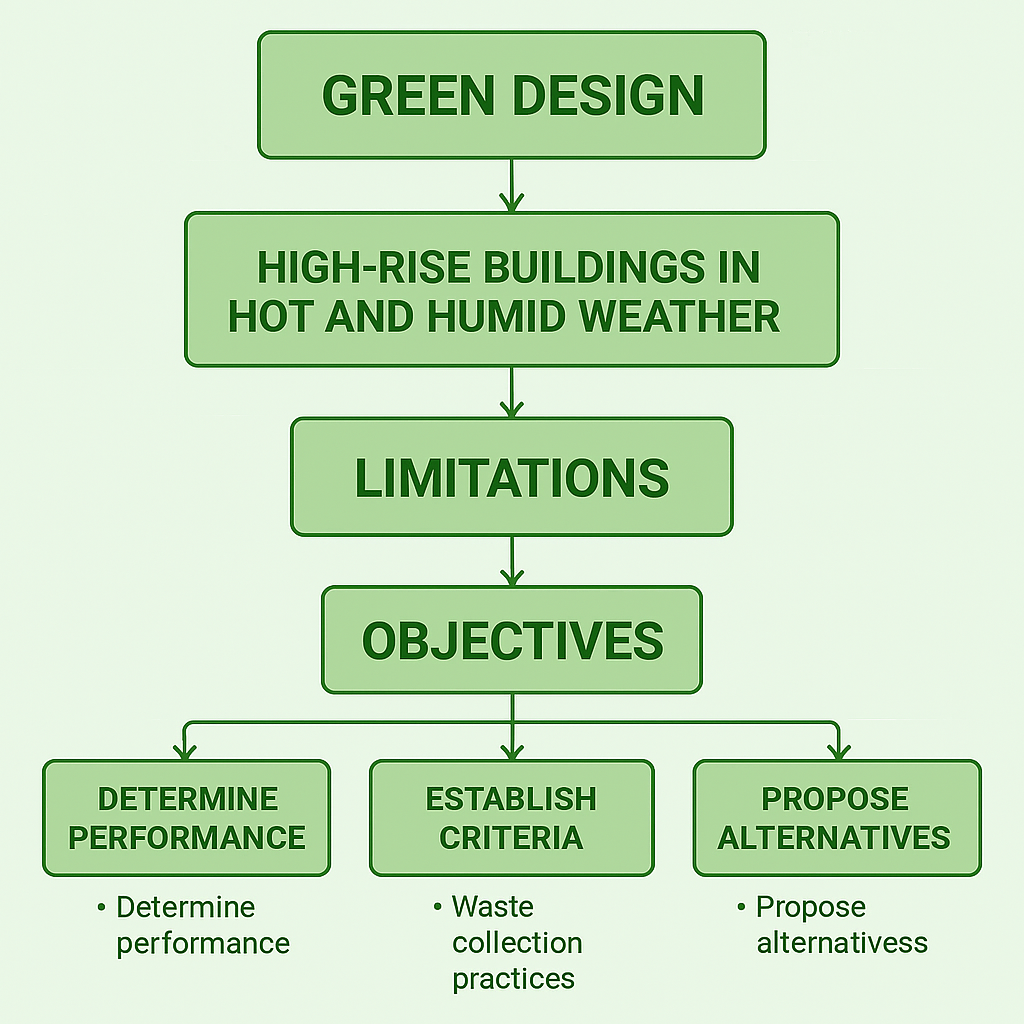
Downloads
Published
Issue
Section
License
Copyright (c) 2025 Progress in Energy and Environment

This work is licensed under a Creative Commons Attribution-NonCommercial 4.0 International License.




